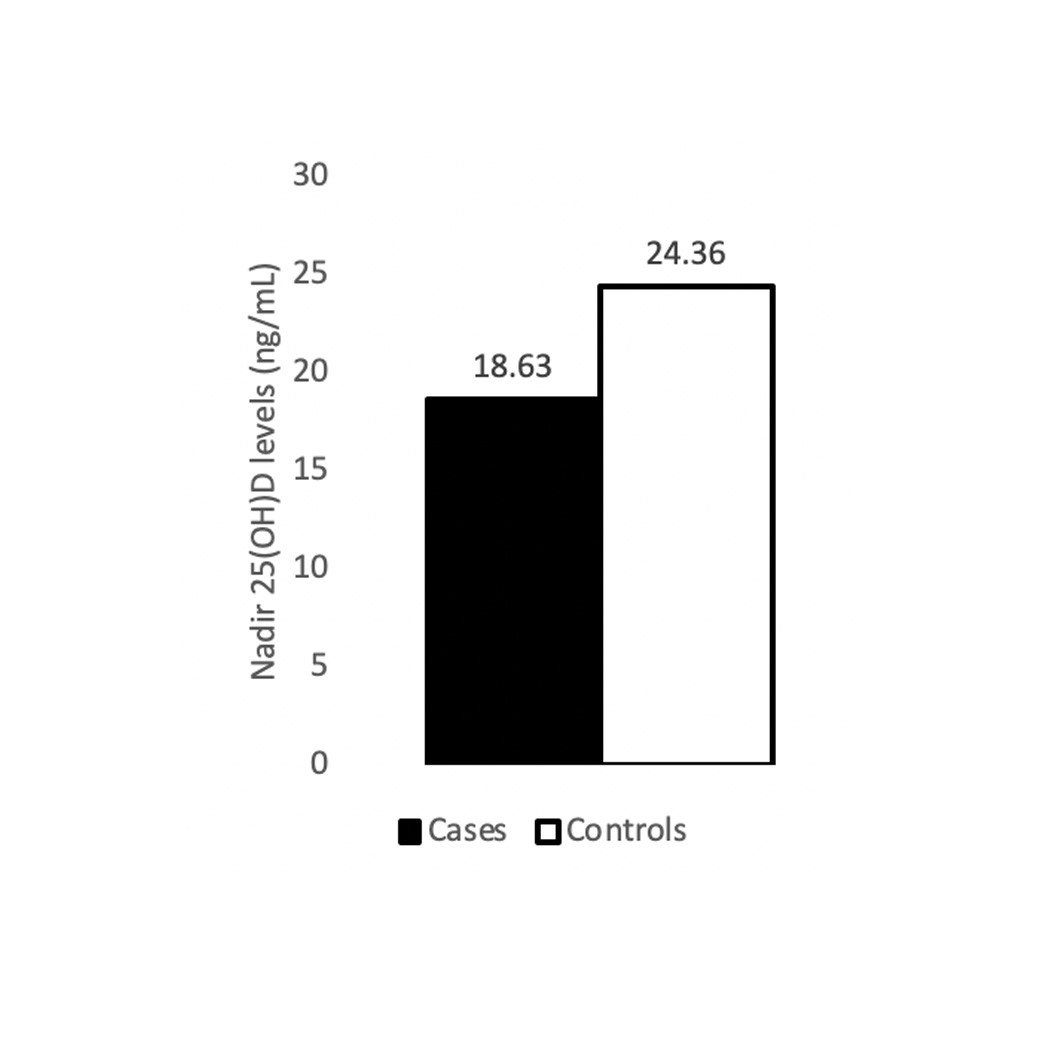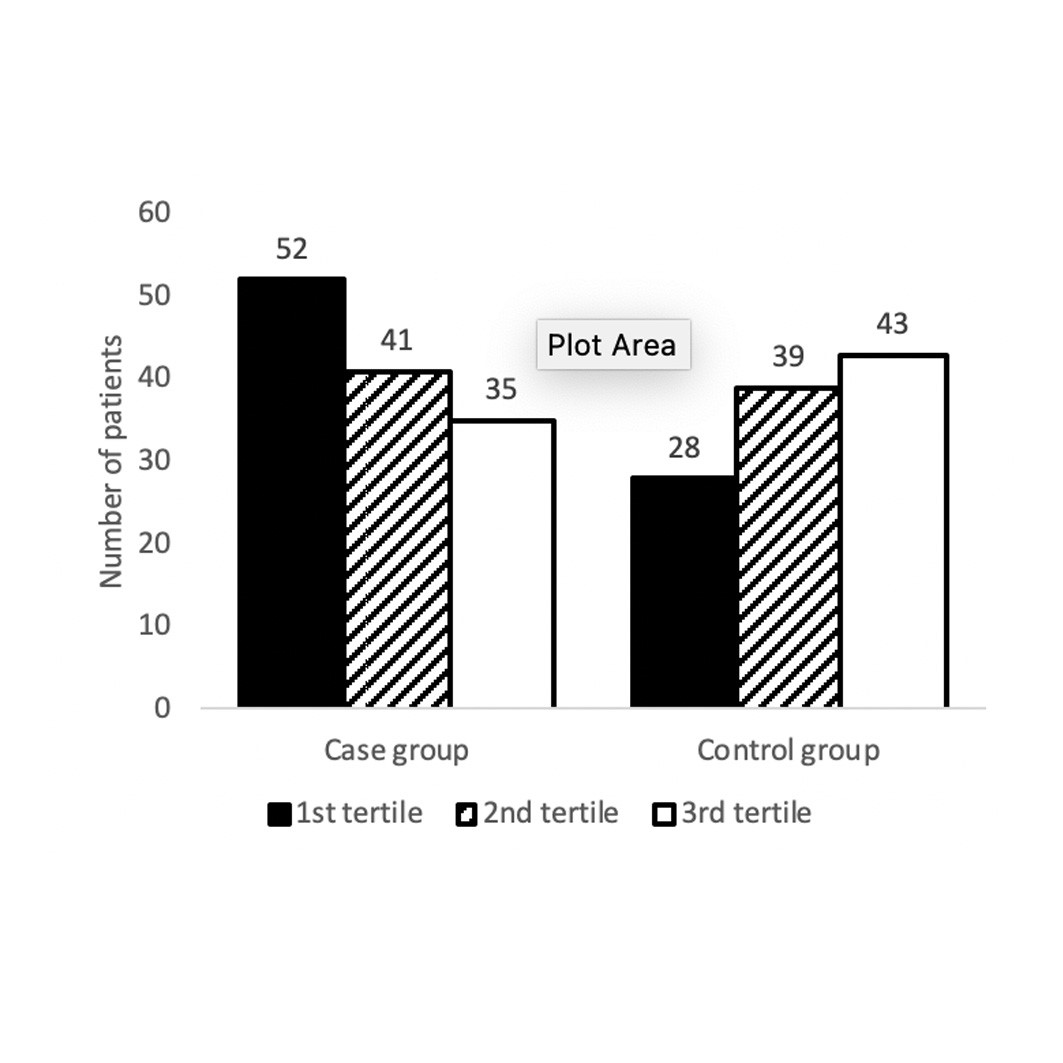Session Information
Date: Saturday, November 16, 2024
Title: SpA Including PsA – Diagnosis, Manifestations, & Outcomes Poster I
Session Type: Poster Session A
Session Time: 10:30AM-12:30PM
Background/Purpose: Axial spondyloarthritis (axSpA) is a progressive disease, characterized by chronic inflammation and progressive structural damage. However, the kinetic of progression to ankylosis and much of the variability in the disease severity remains unexplained. Furthermore, extensive research has shown that vitamin D has inflammatory-modulating properties< ![if !supportFootnotes] >[i]< ![endif] >. The aim of this study was to assess the association between vitamin D deficiency and ankylosis.
< ![if !supportEndnotes] >
< ![endif] >
< ![if !supportFootnotes] >[i]< ![endif] > Athanassiou L, Kostoglou-Athanassiou I, Koutsilieris M, Shoenfeld Y. Vitamin D and Autoimmune Rheumatic Diseases. Biomolecules. 2023;13(4).
Methods: We conducted a single-center nested case-control study using data from a prospective cohort of patients diagnosed with radiographic axSpA (r-axSpA). Diagnosis was made according to both modified New-York criteria and ASAS criteria for r-axSpA. Identification of cases and controls was based on imaging protocol established by a senior musculoskeletal radiologist. Controls were matched to cases based on age, sex and treatment category: non-steroidal anti-inflammatory drugs (NSAIDs) or biological treatment (anti-TNF-alpha or anti-IL-17A). A 1:1 ratio was maintained between cases and controls. The lowest value of vitamin D serum level was considered. For patients who developed ankylosis, vitamin D levels recorded after the occurrence of the event “ankylosis” were censored. Odds ratios (ORs) and the corresponding 95% confidence intervals (CIs) were derived from logistic regression models, adjusted for sex, age, treatment and disease duration.
Results: Out of 906 patients in the cohort, 141 (16%) had ankylosis and were matched. Vitamin D levels were available for 128 patients in the case group and 110 patients in the control group. Cases were more likely to have lower nadir of serum vitamin D levels (18.63 ng/mL vs. 24.36 ng/mL, p = 0.005) (Figure 1). After adjusting for baseline clinical characteristics, each 1-ng/mL of increase in vitamin D level was associated with a 4% of reduction in risk of ankylosis (OR 0.96, 95% CI [0.94 – 0.99]). When the nadir of vitamin D level was assigned as tertiles, participants in the lowest tertile presented the highest risk of ankylosis (OR 2.45; 95% CI 1.19–5.04) (Figure 2).
Conclusion: In this nested case-control study, lower nadir vitamin D level was associated with ankylosis among patients with r-axSpA. To our knowledge, it is the first time that an association between vitamin D levels and ankylosis is described. These findings suggest that vitamin D deficiency may contribute to the pathogenesis of ankylosis in patients with r-axSpA. Longitudinal studies are needed to confirm these findings and explore potential benefits of long-term vitamin D supplementation in axSpA.
To cite this abstract in AMA style:
Lichaa A, KRUG P, Nzeusseu Toukap A. Low Vitamin D Serum Level Is a Risk Factor for Ankylosis in Axial Spondyloarthritis: Evidence from a Nested-Case-Control Study [abstract]. Arthritis Rheumatol. 2024; 76 (suppl 9). https://acrabstracts.org/abstract/low-vitamin-d-serum-level-is-a-risk-factor-for-ankylosis-in-axial-spondyloarthritis-evidence-from-a-nested-case-control-study/. Accessed .« Back to ACR Convergence 2024
ACR Meeting Abstracts - https://acrabstracts.org/abstract/low-vitamin-d-serum-level-is-a-risk-factor-for-ankylosis-in-axial-spondyloarthritis-evidence-from-a-nested-case-control-study/


